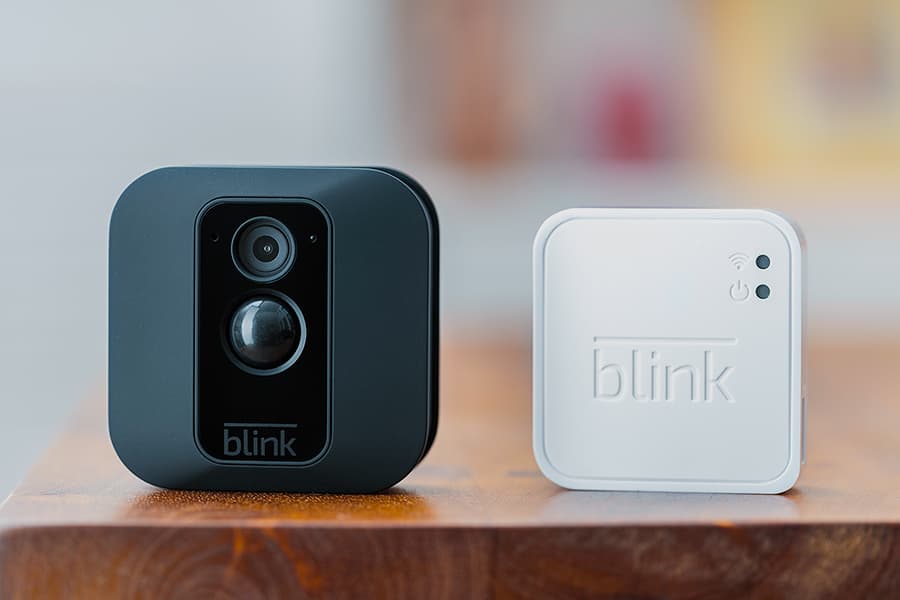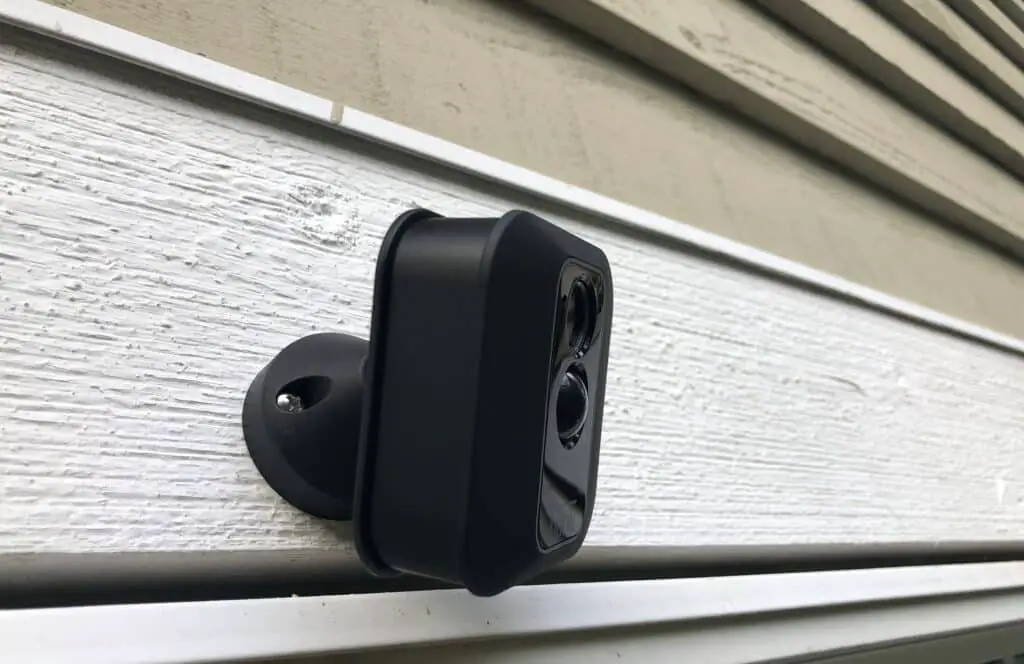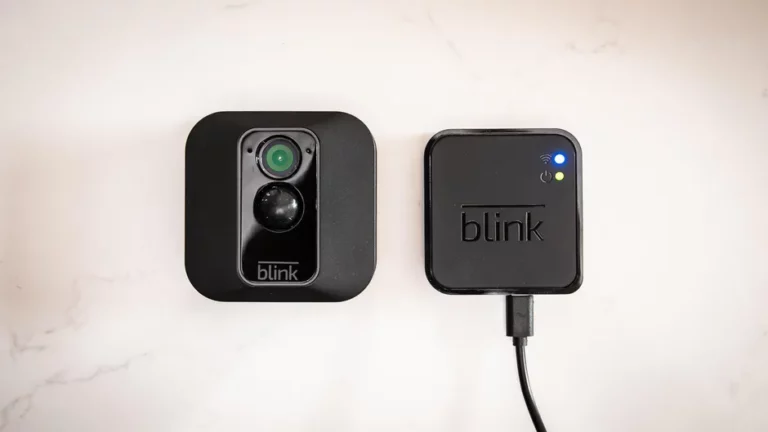Introduction
How To Change Battery In Blink Camera: Blink cameras’ price, ease of installation, and wireless features make them popular for home security and surveillance. These small, adaptable devices let homeowners remotely monitor their properties for peace of mind. Blink cameras need regular maintenance, including battery replacement, like any electronic gadget.
various Blink camera types use various batteries. Finding the right battery for your camera model is essential for a smooth replacement. We will help you identify the Blink camera battery type and where to get it.
Whether you are a new Blink camera owner or simply need a refresher on battery replacement, this tutorial will help you keep your camera operating at its best. Discuss the importance of monitoring your battery life and knowing when it’s time for a replacement. Explore the different Blink camera models and their battery types, ensuring you have the correct replacement battery on hand.

Do Blink cameras have replaceable batteries?
Yes, Blink camera batteries are replaceable and easy to find. Because they use the common AA batteries, you probably already have the replacement batteries in your home, or at the closest convenience store. At the back of the device is a tool that you use to unscrew the back cover to access the batteries.
Blink cameras have removable batteries. Blink cameras are wireless, making installation and positioning straightforward. These cameras use replaceable batteries.
Blink camera models vary in battery type and replacement. Please consult the user manual or Blink’s official documentation to discover your camera model’s battery type and replacement instructions.
Powering off a Blink camera, opening the back cover or battery compartment, and replacing the battery is routine. Blink cameras use readily available AA or AAA batteries.
What is the battery life of a Blink camera?
Up to two years
According to Blink, their cameras can last up to two years on a single set of AA lithium batteries. However, this estimate is based on the cameras being used for an average of 40,000 seconds per month, which equates to about 1,333 seconds per day.
Blink camera battery life depends on model, usage, and climate. Under normal use, Blink cameras have a two-year battery life.
The number of motion-triggered events, the camera’s sensitivity settings, live view usage, and wireless connection strength can all effect battery life. Cameras in high-traffic or motion-activated locations may have reduced battery life.
Blink camera users can follow best practices to extend battery life. These include optimizing’s motion detection settings to prevent needless recording, camera location to minimize false triggers, and maintaining a strong Wi-Fi signal for camera-sync module communication.
What to do when Blink battery dies?
A: The battery-operated Blink cameras are shipped with two non-rechargeable AA 1.5v Lithium batteries and they’re easy to replace when the time comes. Blink camera batteries should be replaced by Energizer Ultimate 1.5v Lithium AA batteries or the equivalent.
When the battery of your Blink camera dies, there are a few steps you can take to address the issue:
Replace the battery
The first and most obvious step is to replace the dead battery with a fresh one. Refer to the user manual or Blink’s official documentation to determine the correct battery type and replacement procedure for your specific camera model. Make sure to power off the camera before removing the old battery and inserting the new one.
Check battery connections
Ensure that the battery is securely connected and properly inserted into the camera. Loose or faulty connections can prevent the camera from receiving power even with a new battery. Double-check the battery compartment and connections to ensure a snug fit.
Verify battery quality
If you’ve replaced the battery but the camera still doesn’t power on, ensure that the new battery is of good quality and fully charged. Sometimes, using low-quality or depleted batteries can result in the camera not turning on.
Contact customer support
If you’ve tried the above steps and the camera still doesn’t work, it may be worth reaching out to Blink’s customer support. They can provide further troubleshooting assistance or advise on any potential hardware issues with the camera.
Why is my blink camera battery not lasting?
Excessive Usage
Overusing your security camera system’s functions like Live View and Motion-Activated Recording for too many hours may exhaust your Blink camera batteries.
Several variables may be affecting your Blink camera battery’s lifespan.
Motion triggers
Blink cameras start recording when they sense movement. If you put the camera in a place with a lot of foot traffic or a lot of motion, it may cause more motion-triggered events, which will use more battery. You can save battery life by changing the camera’s sensitivity settings or moving it to get rid of as many fake triggers as possible.
Live view usage
Regularly using the live view feature to monitor the camera’s feed can consume more battery power. While live viewing is convenient, excessive use can impact the overall battery life. It’s recommended to use live view sparingly when necessary to conserve battery.
Weak Wi-Fi signal
The camera uses more power to maintain a weak or inconsistent Wi-Fi connection with the sync module. Make sure the camera is close to the sync module and that no major obstacles are blocking the signal.
Extreme temperatures
Extreme temperatures, whether excessively hot or cold, can affect battery performance. Batteries tend to drain faster in extreme temperatures, so it’s important to place the camera in an environment that is within the recommended temperature range for optimal battery life.
Battery age
Over time, batteries can naturally lose their capacity and ability to hold a charge. If you’ve had the same battery for a long period, it may be time to consider replacing it with a new one.

Does Blink camera charge battery?
The Lithium batteries that are included with the Blink system are NOT rechargeable. If the camera is plugged in while the batteries are in the camera – the batteries will not recharge. Also keep in mind, there will be some drain on your batteries even when your device is powered by a USB cable.
Blink cameras do not charge their batteries. The batteries used in Blink cameras are not rechargeable and need to be replaced when they run out of power. Once the battery is depleted, it cannot be recharged within the camera itself.
Blink cameras with replaceable batteries are convenient and flexible. Users can replace the battery when it dies to keep the camera running without waiting for it to recharge.
Blink camera users must power down the camera, remove the back cover or battery compartment, and change the battery. Blink camera models differ in battery type and replacement, so reference the user manual or Blink’s official documentation for exact procedures.
Can Blink cameras work offline?
Blink cameras cannot record and store footage on the Blink Cloud servers without a solid WiFi connection. Additionally, they lose out on almost all the features it is advertised to do such as remote device monitoring, security notifications, and two-way audio without a WiFi connection.
Online connectivity is the main focus of blink cameras. They use Wi-Fi to communicate with the Blink sync module and enable remote viewing, motion detection, and other smart capabilities through the Blink app.
Blink cameras can record motion-triggered events even if the internet is down. Once the internet connection is restored, the footage is transferred to Blink cloud storage for remote viewing.
Blink cameras cannot transmit live video, send warnings, or access the feed remotely without an internet connection. These capabilities mainly rely on an internet connection to send data to Blink’s app or website. Blink cameras save battery life when not sending data. This lets them record motion events amid temporary internet outages or in places with inconsistent connectivity.
Can I use Blink camera without battery?
The USB port on the back of all Blink cameras can be used with a Micro USB cable and adapter to power them, rather than using batteries. For proper safety only use 5V/1A USB power adapters. Since Mini cameras are only powered by USB and do not use batteries, a cable and power adapter comes included in the box.
Blink cameras cannot be used without a battery. The battery is an essential component that powers the camera and allows it to function. Without a functioning battery, the camera will not be able to capture video, detect motion, or perform any of its intended functions.
Blink cameras are designed to be wireless and portable, making them convenient for installation and placement in various locations. The battery provides the necessary power to operate the camera independently, without the need for a constant power source or wiring.
The battery life of Blink cameras can vary depending on factors such as usage patterns, motion triggers, and camera settings. It is important to regularly monitor the battery level and replace it when it runs low to ensure uninterrupted operation and continuous monitoring of your property.
Is Blink camera portable?
Blink Outdoor Camera’s features
Battery-powered: We love the portability and the two-year battery life.
Blink cameras are designed to be portable, making them a flexible choice for home security and surveillance. One of the key features of Blink cameras is their wireless design, which allows for easy installation and mobility.
The fact that Blink cameras are cordless means that they don’t need a power source or wires. Instead, they are driven by batteries that can be changed. This makes them portable and lets people put them anywhere they want. Because the cameras are portable, users can easily move them to different parts of their property as their monitoring needs or protection needs change.
The compact size and lightweight nature of Blink cameras further enhance their portability. They can be easily mounted on walls, placed on shelves, or attached to other surfaces using the provided mounting brackets. This flexibility allows users to position the cameras wherever they are needed most, whether it’s inside the house, in the backyard, or even in temporary locations like vacation rentals or outdoor events.

Conclusion
It’s easy to make sure that your home security system keeps working by changing the battery in your Blink camera. By following the step-by-step steps in this guide, it will be easy to change the battery in your Blink camera and keep it working. It’s important to keep an eye on your camera’s battery life so that monitoring doesn’t stop. Use the Blink app or the camera’s built-in light to check the power level often. If you take the initiative to replace the battery before it runs out, watching will continue without interruption.
Remember to identify the specific Blink camera model you own and acquire the correct replacement battery. Each model may have its own unique battery type and requirements, so it’s essential to have the right camera battery on hand. Before starting the battery replacement process, always power off your camera and gather the necessary tools. This will help prevent any accidental damage to the device or injury to yourself.
You can safely take out the old battery and put in the new one if you carefully follow the steps in this guide. Write down any specific steps or warnings that are given for your camera type. If you want your Blink camera’s battery to last as long as possible, you should follow best practices like making sure the motion recognition settings are perfect, moving the camera around, and not recording too much. By doing these things, you can save battery power and make your camera last longer.

